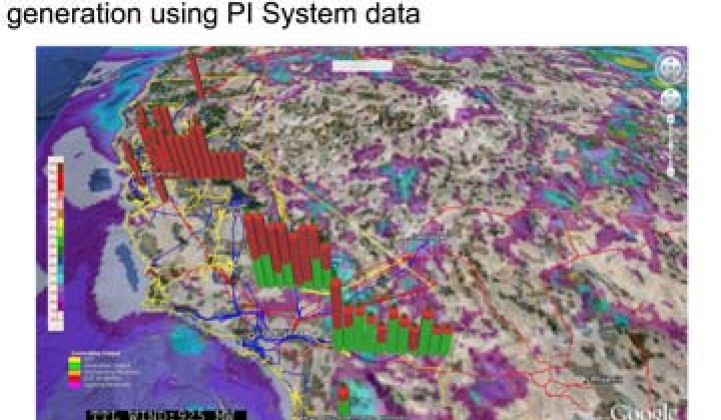What sort of infrastructure is critical to running your business? Water? Electricity? Roads? What about real-time data?
“Real-time data is the currency of the new decade,” Andrew Fanara, Sustainability Strategist at OSIsoft, said during a recent Greentech Media webinar. (You can view the archived webcast and download the slides here.)
Although most corporations collect and crunch data for everything from daily operations to sustainability accounting, Fanara said that ideally companies should be analyzing and improving efficiency in all areas under one platform. Fanara would like that platform to be OSIsoft’s PI system.
OSIsoft might not be a household name (Fanara admitted he hadn’t even heard of it while he worked at the EPA’s Energy Star program), but it's a 30-year-old company with 800 employees in locations across the globe, and the firm's PI System is well entrenched as an operational data store and real-time data management infrastructure in utilities and other process-driven industries. OSISoft also has strategic alliances with IBM, SAP, Microsoft and Cisco and has formed partnerships with dozens of industry leaders. The result is a product that serves utilities, industrial companies and institutions across the globe.
“We’re not focused on just one area of sustainability,” said Fanara, an assertion strongly bolstered by the various examples offered during the webinar.
Alcoa used the platform to look at real-time plant data along side information from the Midwest Independent System Operator to find the times when it is more profitable to sell electricity back to the grid rather than produce aluminum.
At British Gas, the utility is using the platform for meter data management, while the California Independent System Operator adopted PI as part of its renewable dispatch desk, which monitors solar and wind conditions and generation.
The real value, though, is that the platform doesn’t just have to be renewables or meter data management. It can also be adapted for use in a wide variety of applications, including real-time measurement and feedback to employees in support of sustainability initiatives that save the environment and money at the same time. “Given that many utilities have used PI infrastructure for quite some time, they’ve become quite innovative in how to solve problems,” said Fanara. That innovation can come across the value chain, from generation to delivery and demand response.
Water infrastructure is one area where a little bit of real-time intelligence goes a long way. At Halifax Water, the utility saves about $650,000 per year by reducing leakage. Gary Wong, Global Water Industry Executive for OSISoft, also pointed out the water-intensive nature of power generation: "It takes about two gallons of water to generate one kilowatt hour of electricity." Given the overall amount of power generated in the U.S. and elsewhere, even a small reduction in water for generation would translate to huge benefits, especially in areas straining to meet water demands.
In the utility industry, there is a debate whether real-time information is necessary for customers, but OSIsoft argues that the granularity and ability to act on real-time data allows companies to participate in more demand response programs or critical peak pricing tariffs.
And if a real-time infrastructure for data that touches upon every area of your business seems excessive right now, it shouldn’t, argued Fanara. Indeed, sooner rather than later, it will become essential. “It will increasingly become core to every sustainability strategy,” he said.



